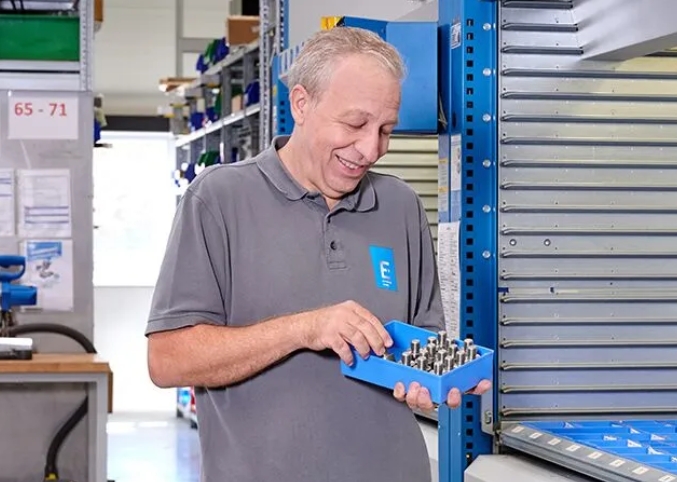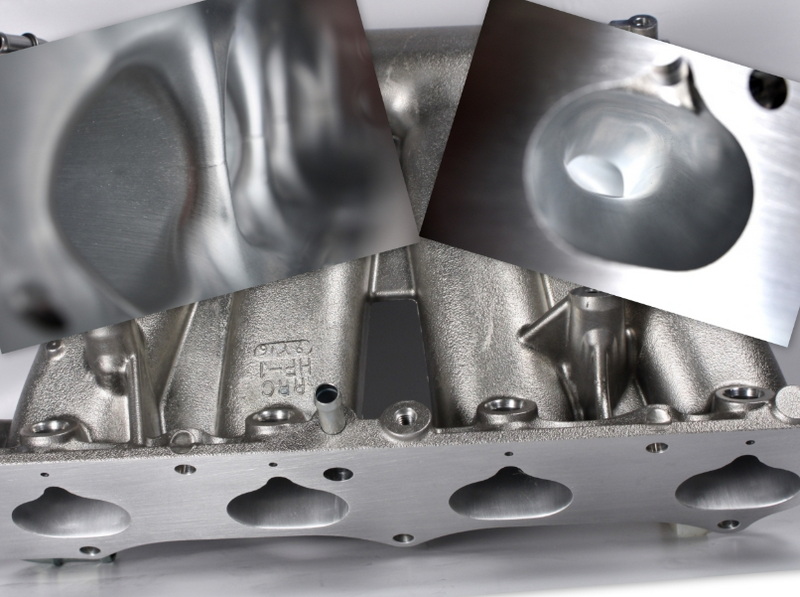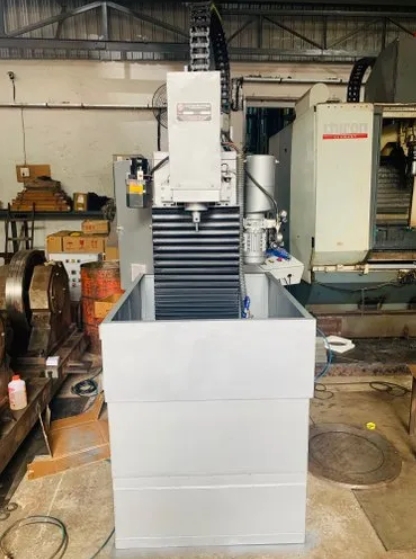Content Menu
● Introduction to Extrusion Forming Equipment
● How Extrusion Forming Equipment Works
● Key Advantages of Extrusion Forming Equipment
● Most Common Applications of Extrusion Forming Equipment
>> Plastics Industry
>> Metal Industry
>> Rubber Industry
>> Food Industry
>> Construction and Building Materials
>> Automotive Industry
>> Medical and Pharmaceutical Industry
>> Electrical and Electronics Industry
>> Packaging Industry
● Innovations and Trends in Extrusion Forming
● Conclusion
● FAQ (Frequently Asked Questions)
>> 1. What materials can be processed using extrusion forming equipment?
>> 2. What are the main types of extrusion forming equipment?
>> 3. How does extrusion forming equipment benefit the automotive industry?
>> 4. Can extrusion forming equipment be used for medical applications?
>> 5. What are the key advantages of using extrusion forming equipment in manufacturing?
● Citations:
Extrusion forming equipment is a cornerstone of modern manufacturing, enabling the efficient production of products with consistent cross-sectional profiles. This technology is used across a wide spectrum of industries, from plastics and metals to food processing and pharmaceuticals. Its versatility, cost-effectiveness, and adaptability make extrusion forming equipment indispensable for high-volume, continuous production environments. In this comprehensive article, we will explore the most common applications of extrusion forming equipment, delve into its advantages, and answer key questions related to its operation and benefits.

Introduction to Extrusion Forming Equipment
Extrusion forming equipment refers to machines and systems designed to force raw materials through a die to create objects with a fixed cross-sectional profile. The process is highly adaptable, accommodating a wide range of materials including plastics, metals, rubber, ceramics, and even foodstuffs[12][9]. The resulting products, known as extrudates, can be tailored for numerous applications by altering the die shape, raw material, and process parameters.
How Extrusion Forming Equipment Works
At its core, extrusion forming equipment consists of several fundamental components:
- Hopper: Feeds raw material (pellets, powder, or granules) into the extruder.
- Barrel and Screw: The screw rotates within the heated barrel, conveying, melting, and mixing the material.
- Die: Shapes the molten or softened material into the desired cross-sectional profile.
- Cooling System: Solidifies the extruded product as it exits the die.
- Take-Up System: Pulls the finished product away from the die and cuts or coils it as needed[3][7][12].
There are two main types of extrusion: hot extrusion, which involves preheating the material, and cold extrusion, which is performed at or near room temperature[12].
Key Advantages of Extrusion Forming Equipment
Extrusion forming equipment offers several significant advantages:
- High Efficiency: Capable of continuous production, making it ideal for high-volume manufacturing[4][7].
- Cost-Effectiveness: Lower production costs due to automation and minimal material waste[7].
- Versatility: Suitable for a wide range of materials and product shapes[4][7].
- Consistent Quality: Automated control ensures uniformity in product dimensions and properties[7].
- Flexibility: Changing the die allows rapid switching between product types and sizes[4].
- Scalability: Easily scaled up for mass production or down for prototyping and specialty runs[7].
Most Common Applications of Extrusion Forming Equipment
Extrusion forming equipment finds application in a diverse array of industries. Below, we examine the most prevalent uses.
Plastics Industry
The plastics industry is one of the largest users of extrusion forming equipment. Common applications include:
- Pipes and Tubing: PVC, PE, and other plastic pipes for plumbing, irrigation, and industrial use[1][10].
- Profiles: Window frames, door frames, weather stripping, and custom profiles for construction and appliances[1][10].
- Films and Sheets: Packaging films, plastic sheets for thermoforming, and protective coverings[1][10].
- Wire Insulation: Coating electrical wires and cables with plastic jackets[10].
- Automotive Parts: Seals, gaskets, and trim components[1][10].
The ability to produce continuous lengths of product with consistent cross-sections makes extrusion ideal for these applications.
Metal Industry
Metal extrusion is widely used for forming complex profiles and components from aluminum, copper, steel, and other metals. Key applications include:
- Structural Components: Beams, channels, and rails for construction and transportation[5][6][8].
- Automotive Parts: Engine blocks, transmission housings, and structural supports[6].
- Aerospace Components: Engine blades, turbine disks, and lightweight structural elements[6].
- Architectural Profiles: Window and door frames, curtain walls, and decorative trims[6][8].
- Heat Sinks: Aluminum extrusions for electronic cooling applications[8].
Metal extrusion allows for the efficient production of high-strength, lightweight, and intricate parts.

Rubber Industry
Rubber extrusion is essential for manufacturing flexible, durable products such as:
- Seals and Gaskets: Used in automotive, aerospace, and industrial applications[9].
- Hoses and Tubing: For fluid transfer in vehicles, machinery, and appliances[9].
- Weather Stripping: Ensures airtight and watertight seals in doors and windows[9].
The process is particularly effective for producing long, continuous rubber products with uniform cross-sections.
Food Industry
Extrusion forming equipment is a mainstay in food processing, especially for products requiring specific shapes and textures:
- Breakfast Cereals: Shaped and cooked via high-temperature extrusion[9].
- Snack Foods: Extruded snacks like cheese puffs and pretzels[9].
- Pasta and Noodles: Cold extrusion forms pasta shapes for later cooking[9].
- Pet Foods: Dry and semi-moist pet foods are commonly extruded[9].
Extrusion enables precise control over product texture, shape, and cooking, enhancing both quality and efficiency.
Construction and Building Materials
Extrusion forming equipment is pivotal in the construction industry for producing:
- PVC and Aluminum Profiles: Window and door frames, siding, and decorative trims[1][6][8].
- Insulation Materials: Foam and composite extrusions for thermal and acoustic insulation[1].
- Pipes and Conduits: For plumbing, electrical, and HVAC systems[1][10].
The process supports the creation of lightweight, durable, and weather-resistant building materials.
Automotive Industry
The automotive sector relies heavily on extrusion for both plastic and metal components:
- Weather Seals and Gaskets: Ensuring airtight and watertight vehicle assemblies[1][6].
- Tubing and Hoses: For fuel, brake, and cooling systems[1][6].
- Structural Profiles: Lightweight aluminum extrusions for chassis and body components[6][8].
- Interior Trim: Custom plastic profiles for dashboards, panels, and decorative elements[1].
Extrusion forming equipment allows for rapid, high-volume production of components with precise specifications.
Medical and Pharmaceutical Industry
In the medical field, extrusion is used to produce:
- Tubing and Catheters: Medical-grade plastics are extruded into precise, sterile tubes for various procedures[1].
- Micro-Extrusions: Tiny, intricate profiles for minimally invasive devices[11].
- Drug Delivery Systems: Hot melt extrusion for producing solid oral doses and drug carriers[9].
The ability to use medical-grade materials and maintain strict tolerances is crucial in this sector.
Electrical and Electronics Industry
Extrusion forming equipment is integral to the production of:
- Wire and Cable Insulation: Protective jackets for electrical conductors[10].
- Busbars: Aluminum extrusions for power distribution[8].
- Heat Sinks: Custom extruded profiles for electronic cooling[8].
The process ensures electrical safety, performance, and thermal management.
Packaging Industry
Extrusion is widely used for creating packaging materials such as:
- Plastic Films and Sheets: Used for food packaging, shrink wrap, and protective covers[1].
- Blister Packs: Formed from extruded plastic sheets[10].
- Flexible Packaging: Multi-layer films for barrier properties and extended shelf life[1].
The adaptability of extrusion forming equipment allows for customization of thickness, barrier properties, and finishes.
Innovations and Trends in Extrusion Forming
Recent advancements in extrusion forming equipment include:
- Automation and Smart Controls: Enhanced process monitoring and quality assurance.
- Co-Extrusion: Simultaneous extrusion of multiple materials for layered or composite products.
- Green Manufacturing: Increased use of recycled materials and energy-efficient systems[7].
- Micro-Extrusion: Production of ultra-small, high-precision components for electronics and medical devices[11].
- Advanced Materials: Processing of composites, bioplastics, and engineered polymers for specialized applications.
These innovations continue to expand the capabilities and applications of extrusion forming equipment across industries.
Conclusion
Extrusion forming equipment is a versatile and indispensable tool in modern manufacturing, enabling the efficient production of a vast array of products with consistent quality and tailored properties. From plastics and metals to food, pharmaceuticals, and construction materials, its applications are virtually limitless. The advantages of high efficiency, cost-effectiveness, and adaptability ensure that extrusion forming equipment will remain at the forefront of industrial innovation for years to come.

FAQ (Frequently Asked Questions)
1. What materials can be processed using extrusion forming equipment?
Extrusion forming equipment can process a wide range of materials, including plastics (such as PVC, PE, and ABS), metals (aluminum, copper, steel), rubber, ceramics, foodstuffs, and even pharmaceuticals. The choice of material depends on the application and desired product properties[12][9][11].
2. What are the main types of extrusion forming equipment?
The main types include single-screw extruders, twin-screw extruders, hot extrusion machines, and cold extrusion machines. Each type is suited for different materials and product requirements. For example, twin-screw extruders are ideal for mixing and compounding, while single-screw extruders are commonly used for straightforward profile and tubing production[3][12].
3. How does extrusion forming equipment benefit the automotive industry?
In the automotive industry, extrusion forming equipment is used to produce weather seals, gaskets, tubing, hoses, and lightweight structural components. The process allows for high-volume, consistent production of parts that meet stringent performance and safety standards[1][6].
4. Can extrusion forming equipment be used for medical applications?
Yes, extrusion forming equipment is widely used in the medical sector to produce tubing, catheters, micro-extrusions, and drug delivery systems. The equipment can process medical-grade materials and achieve the precise tolerances required for critical healthcare applications[1][11].
5. What are the key advantages of using extrusion forming equipment in manufacturing?
The main advantages include high efficiency, cost-effectiveness, versatility, consistent product quality, flexibility in design, and scalability for both mass production and specialized applications. Additionally, extrusion forming equipment supports green manufacturing through the use of recycled materials and minimal waste generation[4][7].
Citations:
[1] https://www.clarkrandp.com/6-common-applications-of-plastic-extrusion/
[2] https://daextrusion.com/applications/
[3] https://omnexus.specialchem.com/selection-guide/an-in-depth-look-at-extrusion
[4] https://www.qiaolianmachine.com/article/what-are-the-advantages-of-extrusion-moulding-process.html
[5] https://paulmurphyplastics.com/industry-news-blog/extrusion-process-working-types-application-advantages-and-disadvantages/
[6] https://elimold.com/types-of-metal-extrusion-manufacturing-processes-and-applications/
[7] https://www.longshengmfg.com/extrusion-moulding-understanding-the-process-and-its-benefits/
[8] https://www.wileymetal.com/five-common-applications-of-aluminum-extrusion/
[9] https://en.wikipedia.org/wiki/Extrusion
[10] https://plasticextrusiontech.net/machines-used-in-the-plastic-extrusion-process/
[11] https://www.theengineeringchoice.com/what-is-extrusion/
[12] https://www.globalspec.com/learnmore/manufacturing_process_equipment/manufacturing_equipment_components/extrusion_machines
[13] https://www.movacolor.com/knowledge/process/extrusion/what-is-extrusion-applications-process-steps/
[14] https://paulmurphyplastics.com/industry-news-blog/extrusion-process-types-advantages-disadvantages-applications/
[15] https://testbook.com/mechanical-engineering/extrusion-process-and-types
[16] https://paulmurphyplastics.com/industry-news-blog/extrusion-process-working-types-application-advantages-and-disadvantages/
[17] https://www.tfgusa.com/understanding-extrusion-a-fundamental-manufacturing-process/
[18] https://www.dynisco.com/userfiles/files/introduction_to_extrusion.pdf
[19] https://www.rayda.co.uk/blog/advantages-and-disadvantages-of-plastic-extrusion/
[20] https://www.sciencedirect.com/topics/engineering/extrusion-process
[21] https://www.kellerplastics.com/plastic-extrusions/benefits-of-extrusion/
[22] https://khatabook.com/blog/extrusion-process-working-types-application-advantages-and-disadvantages/
[23] https://www.globalspec.com/learnmore/manufacturing_process_equipment/manufacturing_equipment_components/extrusion_machines
[24] https://www.euroextrusions.com/plastic-extrusion-advantages-benefits/






















